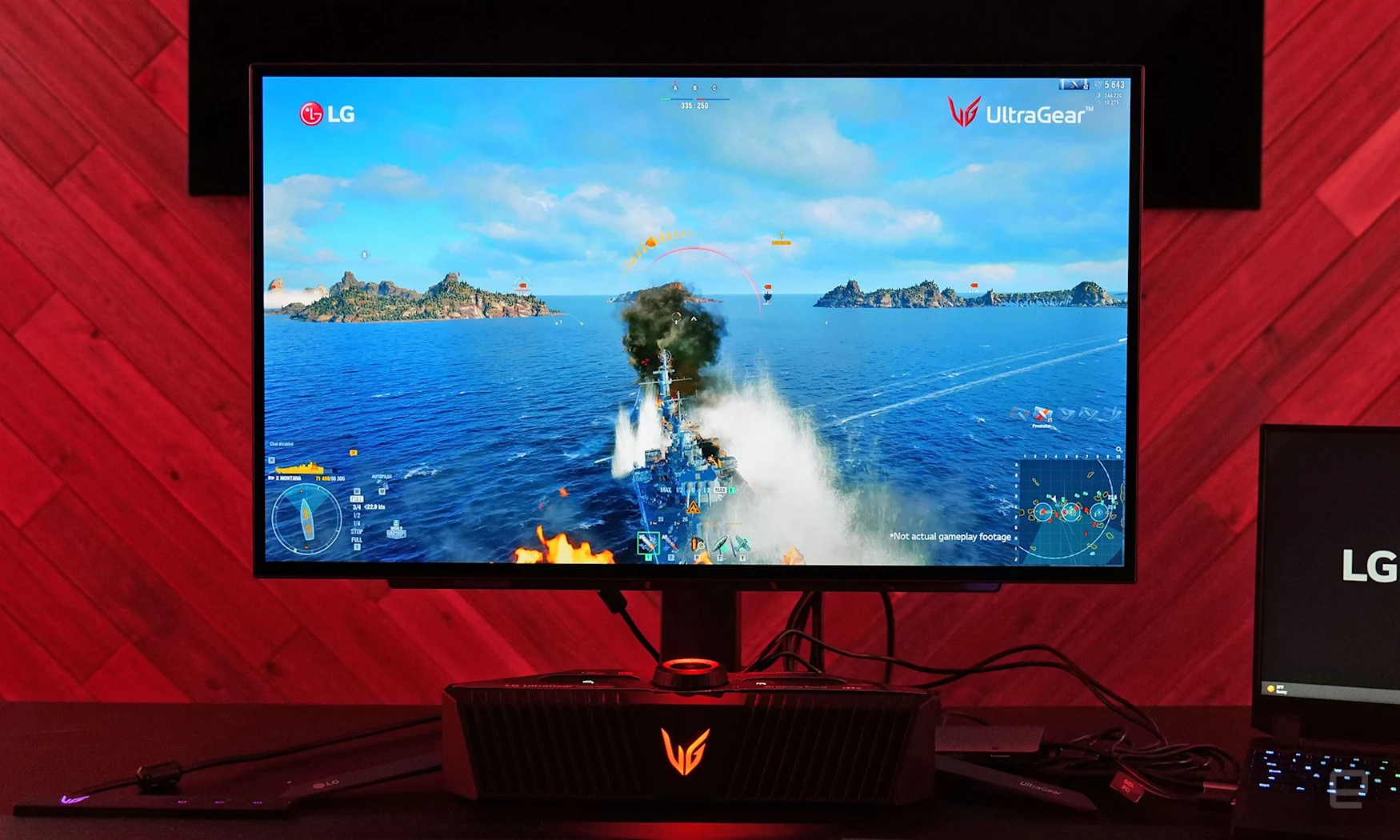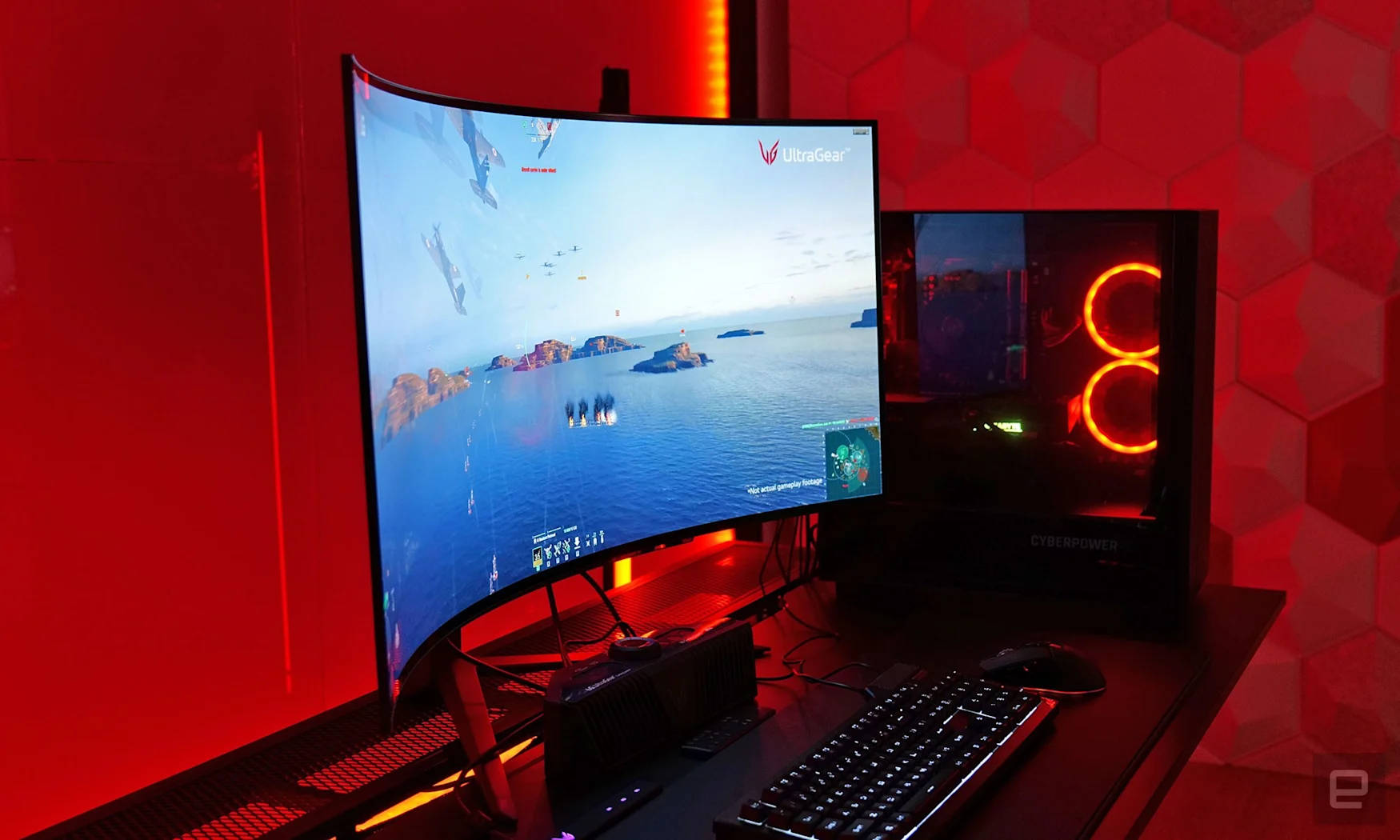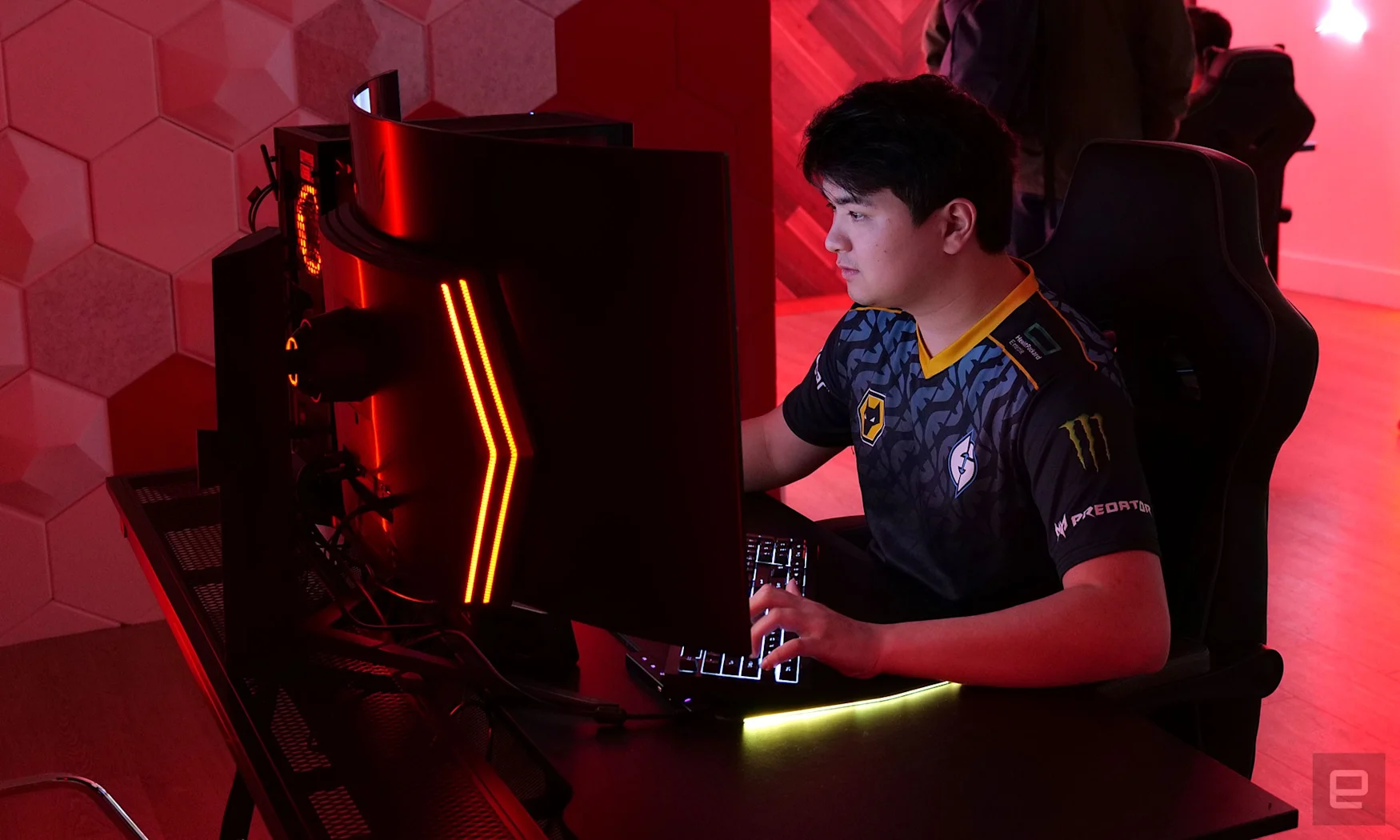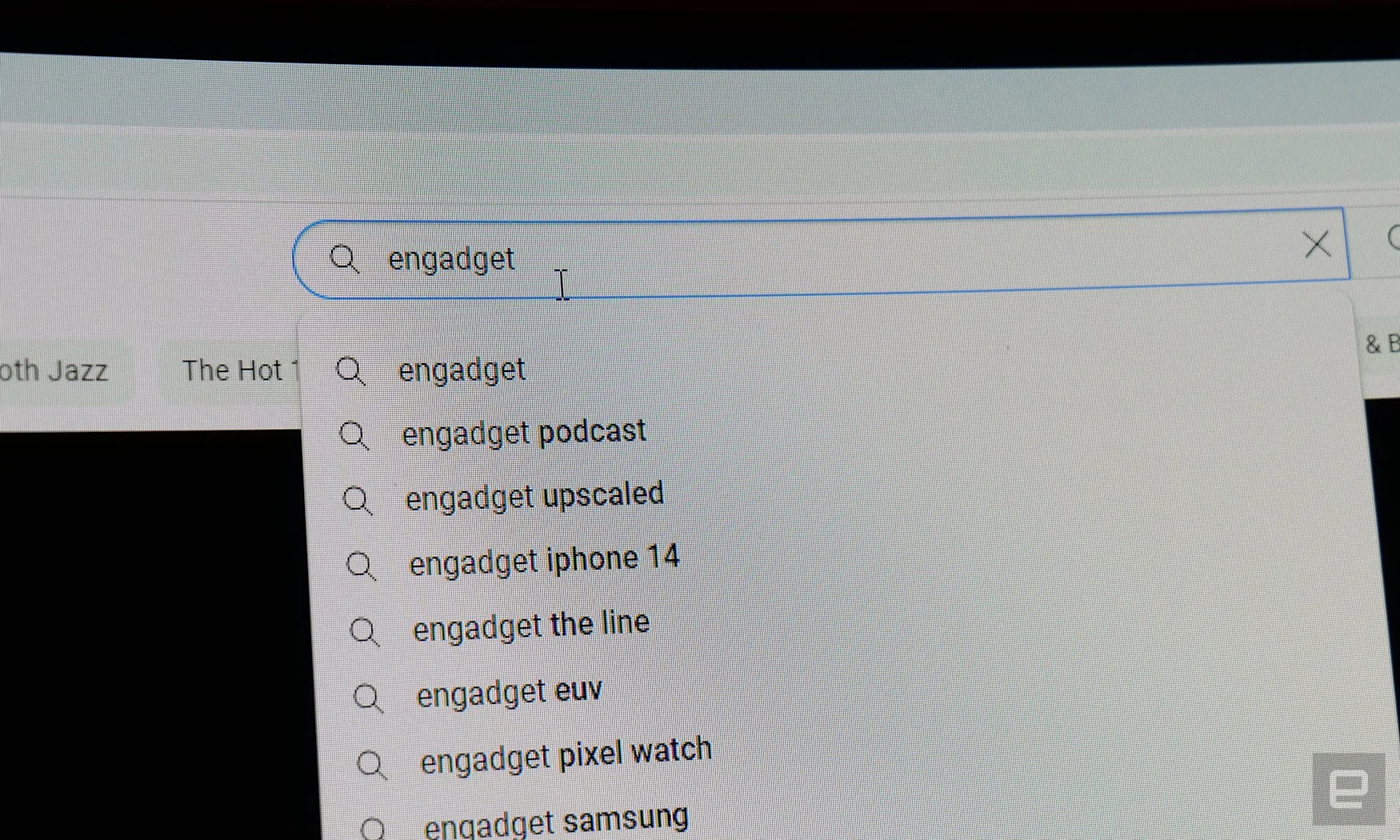[ad_1]
Earlier this year, Alienware released some of the best gaming monitors on the market right now: But last week, and after having the chance to test them in person, I can say that Alienware’s monitors have some impressive new competition.
Unlike the AW3423DW, LG’s display comes in two sizes for slightly different uses. The flat panel with 2,560 x 1,440 resolution is suitable for general use and more demanding competition, while the 45-inch screen has an 800R radius curved screen with 3,440 x 1,440 resolution for a more immersive experience.

Sam Rutherford/Engadget
One of the nice things about these monitors is that no matter which one you choose, they both have a 240Hz refresh rate, which is the highest of any OLED display available today. On top of that, both models offer an incredibly fast response time of just 0.3ms (gray to gray). In addition, they support both AMD FreeSync Premium and Nvidia G-Sync, and they also produce an impressive color range (up to 98.5 percent of the DCI-P3 spectrum). In short, LG’s new UltraGear displays deliver a laundry list of top-notch display technology, with the obvious downside of only having a relatively low brightness of 200 nits.
If, like many people, you prefer to play games in dark environments, the low light may not be a big deal – especially since you’ll want to turn off the lights to use LG’s built-in RGB light strip. You can sync the LEDs on the back to what’s on the screen, which provides a little bit of lighting without the need for additional hardware. Another small advantage of the minimum brightness is that you don’t need to set ABL (automatic brightness limiter) like on other OLED monitors, so you don’t have to worry about the screen accidentally dimming when looking at the main screen. white screen (when you are viewing a word document or spreadsheet).

Sam Rutherford/Engadget
Unfortunately, due to the size of the screen, especially the huge 45-inch model, text isn’t as crisp as I’d like it to be. This isn’t an issue when you’re playing games, but when I browsed web pages, I found the colors washed out when reading stories and titles, and generally looked blurry. It’s important to mention that the color gamut can be seen on a few new OLED displays (mainly QD-OLED panels due to their triangular sub-pixel arrangement) and tools like Microsoft’s displays or updates. own Clear Type function can solve this problem. But unfortunately I didn’t have time to try it out in the short term.

Sam Rutherford/Engadget
While the new UltraGear monitors may not be the best displays for both productivity and entertainment, they look great in gaming scenarios. The 27GR95QE-B is only $1,000 ($1,700 for the 27GR95QE), and at least it’s the easier of the two to fit on your desk without having to rearrange everything. At 27 inches, it’s roughly the size pro gamers use in tournaments (most tournaments have 24-inch screens), but the tilt, swivel, height, and even portrait settings make it super easy to position the screen just right.
But the best part is how good everything looks in motion. LG brought in some professional Valorant gamers from Evil Geniuses to show off the new UltraGears, and everything stayed clear even during the fire, which brings me to the monitor’s most important spec, the 240Hz refresh rate. Previously, the maximum size that could be obtained on an OLED screen (Alienware and .

Sam Rutherford/Engadget
For those using a 60Hz monitor, this difference may not be a big deal. The problem, however, is that a general rule of thumb for monitors is that you only notice a significant performance difference when you double the refresh rate (eg from 60Hz to 120Hz or from 120Hz to 240Hz), and that’s when you refresh from 120Hz to 120Hz. means a person who exists. A monitor from Alienware or one of Samsung’s competitors may not be much of an improvement with a panel that can’t keep up with the super-high frame rates (typically 240-300 fps or more) that competitive gamers prefer. But with LG’s latest UltraGears, you’ll get the deep blacks and rich vivid colors that OLED screens are known for. and refresh rates that rival all but the fastest LCDs.
The larger and more expensive 45GR95QE-B has a slightly lower pixel density than its smaller sister, but the curved panel provides a wider viewing experience. Its 800R radius is designed to mimic the natural shape of your eyes, even more than a typical 1000R curved screen. The control point is about two and a half feet from the screen, which is basically perfect. You can still see edge-to-edge, so you get a great panoramic view, but it’s not as wide, so you have to constantly move your head to find a button or icon in the corner. Interestingly, when I asked If the 800R’s curve defeats his purpose compared to a flat screen, he says it’s his first time using the monitor, but it doesn’t require much adjustment.

Sam Rutherford/Engadget
In addition to the new panels, there are several additional design changes. First, to better serve competitive gamers, LG is using new feet on the UltraGears deck so you can move the keyboard closer to the screen. But the biggest innovation for me is the remote control for adjusting picture settings. Instead of fiddling around with extra buttons or a joystick behind the monitor, you can just sit back and enjoy a TV-like experience. The addition of a remote control is something we’ve seen on other flagship monitors, and I’m really hoping this will see the move to wider displays across the market.

Sam Rutherford/Engadget
LG’s new UltraGear monitors don’t have the best brightness, but they have all the other high-end features you’d want in a gaming monitor right now. With the 27-inch model priced at $1,000 and the larger 45-inch version at $1,700, LG suddenly has some very interesting versions (both small and large) of Alienware’s impressive QD-OLED display.
All products featured on Engadget are handpicked by our editorial team, regardless of parent company. Some of our stories contain affiliate links. If you purchase something through one of these links, we may receive an affiliate commission. All prices correct at time of publication.
[ad_2]
Source link

